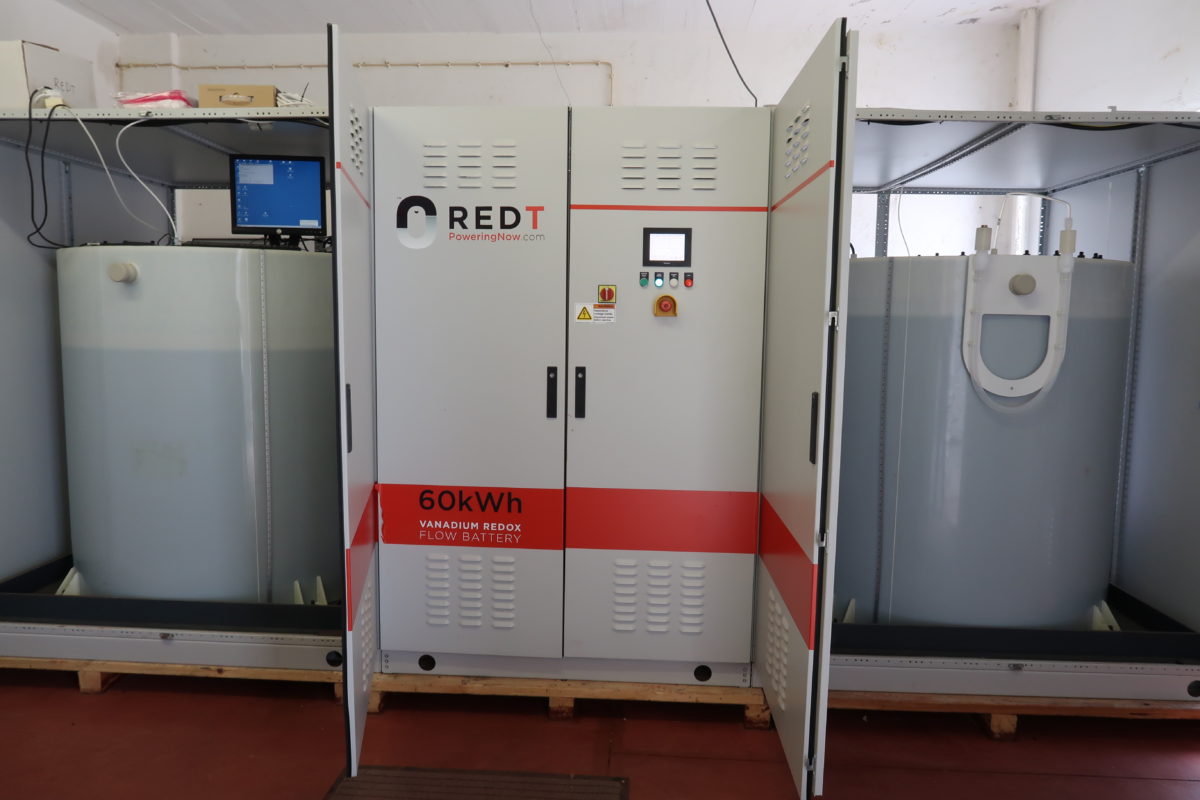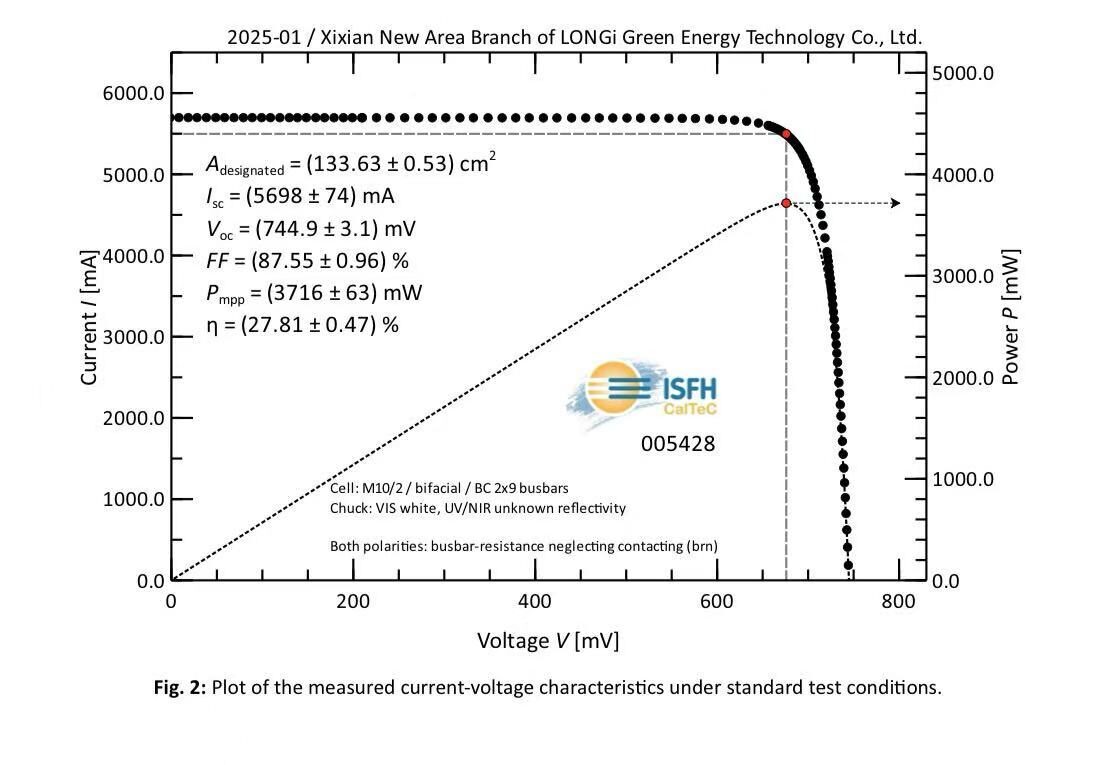Researchers at the University of Évora (UÉvora) in Portugal have developed a vanadium redox flow battery (VRFB) configuration that is able to control the power output of a PV installation by maintaining the ramp rate within a non–violation limit and within a battery state of charge (SoC) range.
They explained that a solar system's ramp rate may have a negative impact on the lifetimes of household appliances and grid stability. “The redox flow battery technology has advantages in the decoupling of power and energy ratios, large cycle life, low maintenance, and limited self-discharge,” they explained. “As for disadvantages, it has a low power density.”
“The vanadium redox flow battery technology can be upscaled up to any capacity, as it can be designed with independent power and energy requirements, an advantage over lithium-ion technology,” the research project's corresponding author, Ana Catarina Foles, told pv magazine. “The sizing of a battery for this purpose of self-consumption and control of power ramps must be done taking into account the load profile, the characteristics of the solar photovoltaic system, such as installed power, inclination, and orientation, among others, as well as the site characteristics, such as solar radiation, meteorology, and limits imposed by law or regulation on power ramps or grid integration.”
The 5 kW/60 kWh battery was connected to a rooftop PV system with an MPPT inverter capable of receiving power commands in real-time. The battery operates through three inverters synchronized to the local three-phase grid. It was built with two electrolyte tanks containing a mixture of vanadium ions and sulfuric acid, two pumps for electrolyte flowing, and a stack as the energy conversion unit. The latter was fabricated with 40 cells electrically connected in series, and hydraulically connected in parallel.
The battery was provided by UK-based redT energy, which was recently renamed Invinity. The device has a rated capacity of 60 kWh, an operating voltage of up to 60 V, and a capacity of 1.8 cubic meters for each tank. “The rated capacity of this battery is used to its fullest, without causing any degradation of its capacity, lifetime or performance,” Foles explained. “The technology type is very tolerable to over-discharge, and overcharge avoidance is achieved through the open-circuit voltage reference control outside the stack. Vanadium ions exist in both electrolyte tanks and crossover through the membrane stack does not lead to contamination.”
The VRFB is also equipped with a reference cell, which is hydraulically connected in parallel with the stack, subjected to the same electrolyte flow, without being subjected to charge or discharge voltage, and allows to make direct real-time voltage measurements.
The storage device was tested to control the ramp rate of a 6.7 kW building-integrated PV microgrid installed at the university campus. The simulation was performed to analyze how the battery balances the system load to ensure firm power output at the load. Three different strategies were applied: maximization of self-consumption; maximization of self-consumption with ramp-rate control; and self-consumption maximization with ramp-rate control and battery charging based on weather forecasts. Accordingly, three different algorithms were developed using Matlab software.
“The inputs of the simulation model include the constraints details of the UÉvora microgrid, the PV generation and load profiles, the developed VRFB electrical model, and the ramp rate calculus and its premises,” the academics specified, noting that the VRFB architecture may be reproduced in similar projects, with the increased advantage of being an easily scalable product.
Through their measurements, the Portuguese scientists found that approximately 5% of the PV power ramps that occurred were above the rate of 10%/min of the PV nameplate capacity and that the first strategy performs only a self-consumption maximization without any form of ramp rate control. The second strategy, by contrast, was able to perform ramp rate control by imposing a 10 %/min of the PV nameplate capacity ramp rate limit, while also providing additional stability over the grid energy exchange.
As for the third strategy, it was not only able to perform ramp rate control and maximize self-consumption but was also capable of implementing an SoC control to prepare the battery to better deal with the next–day PV power ramps. “This strategy demonstrated to be able to control 100% of the ramps with rates above 10%/min, maintaining the self-consumption ratio of the PV system at around 61%,” the scientists affirmed.
“The VRFB can be used in different energy management strategy scenarios, and to better complement the solar photovoltaic generation,” Foles emphasized. “In this study, we show that for the goal, which is to control PV power ramps, and given the profiles understudy, more gains are achieved if applied with the third strategy. However, VRFB can be used with the first and the second strategy if the goals are distinct. VRFB technology is a promising energy storage technology for building integration, and this work proves successful results on its real operation implementation.”
The research's findings can be found in the paper “An approach to implement photovoltaic self-consumption and ramp-rate control algorithm with a vanadium redox flow battery day-to-day forecast charging,” published in Sustainable Energy, Grids and Networks.
This content is protected by copyright and may not be reused. If you want to cooperate with us and would like to reuse some of our content, please contact: editors@pv-magazine.com.




1 comment
By submitting this form you agree to pv magazine using your data for the purposes of publishing your comment.
Your personal data will only be disclosed or otherwise transmitted to third parties for the purposes of spam filtering or if this is necessary for technical maintenance of the website. Any other transfer to third parties will not take place unless this is justified on the basis of applicable data protection regulations or if pv magazine is legally obliged to do so.
You may revoke this consent at any time with effect for the future, in which case your personal data will be deleted immediately. Otherwise, your data will be deleted if pv magazine has processed your request or the purpose of data storage is fulfilled.
Further information on data privacy can be found in our Data Protection Policy.